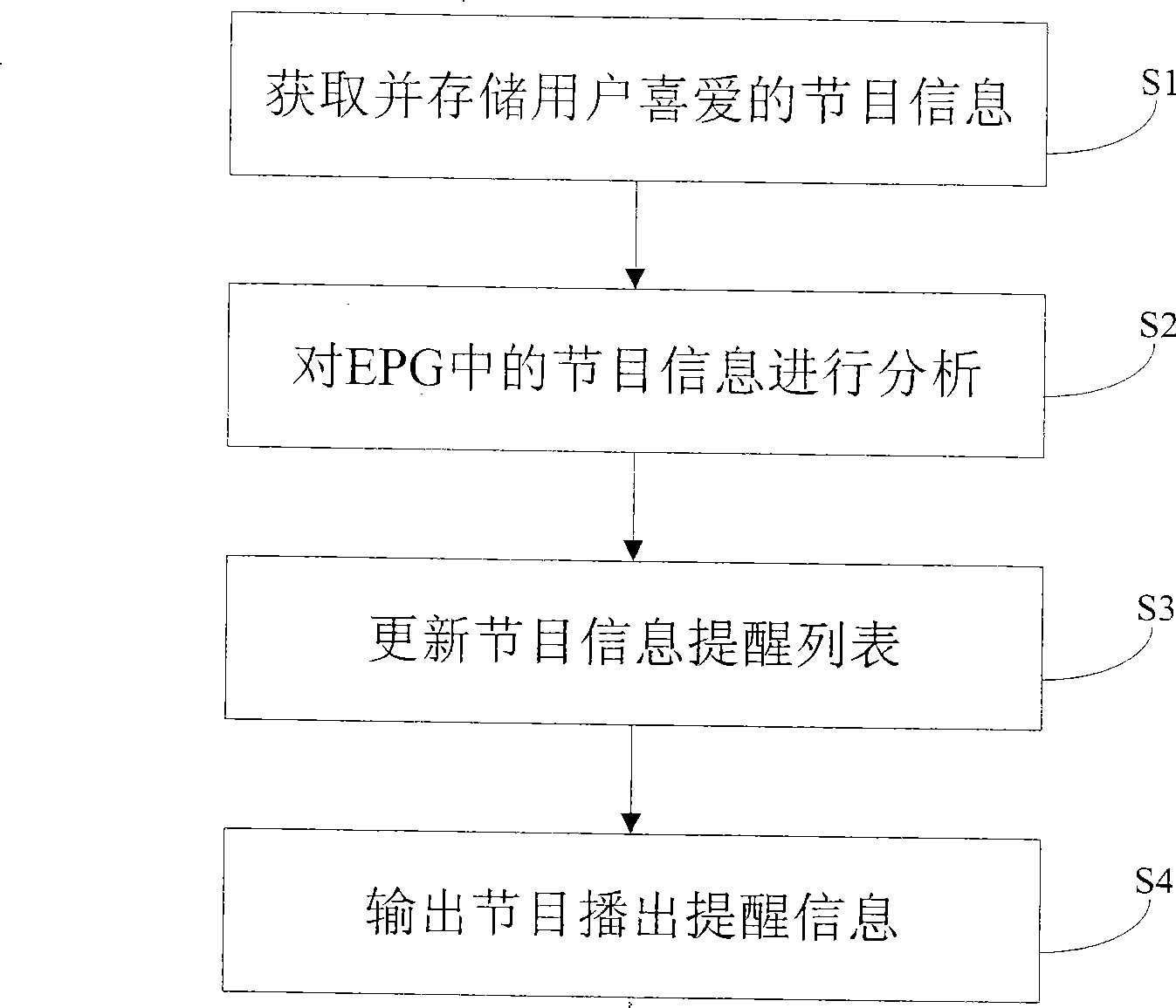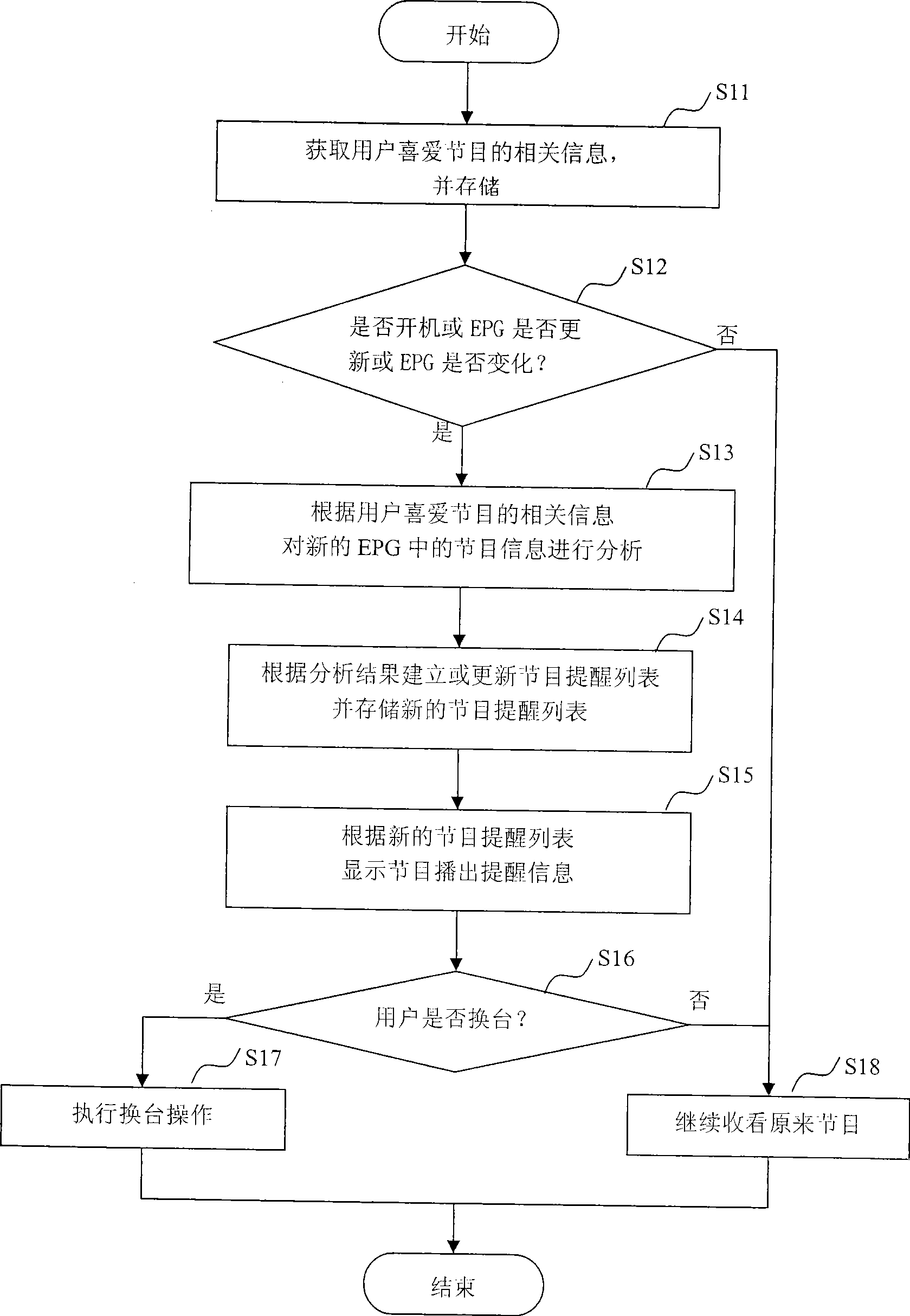Automatic prompting method for television program transmission and television set
A TV program and automatic reminder technology, applied in the field of TV, can solve the problem of inconvenient program broadcast reminder, etc., and achieve the effect of simple use
- Summary
- Abstract
- Description
- Claims
- Application Information
AI Technical Summary
Problems solved by technology
Method used
Image
Examples
Embodiment Construction
[0056] Such as figure 1 As shown, in the TV program automatic reminding TV set of the present invention, four modules are included: the user favorite program information automatic acquisition module 1, the EPG information analysis module 2, the program reminding list module 3 and the program play reminding module 4.
[0057] The user's favorite program information automatic acquisition module 1 is used to read the user code information in the user's radio frequency identification tag by radio frequency identification technology, read the viewing record of the user stored in the TV according to the code information, and automatically Generate user favorite program information, which includes program type, program name and program content keywords, and transmit this information to the EPG information analysis module 2 .
[0058]User favorite program information automatic acquisition module 1 includes user code acquisition submodule 11, viewing record storage submodule 12, viewin...
PUM
 Login to View More
Login to View More Abstract
Description
Claims
Application Information
 Login to View More
Login to View More - R&D
- Intellectual Property
- Life Sciences
- Materials
- Tech Scout
- Unparalleled Data Quality
- Higher Quality Content
- 60% Fewer Hallucinations
Browse by: Latest US Patents, China's latest patents, Technical Efficacy Thesaurus, Application Domain, Technology Topic, Popular Technical Reports.
© 2025 PatSnap. All rights reserved.Legal|Privacy policy|Modern Slavery Act Transparency Statement|Sitemap|About US| Contact US: help@patsnap.com



